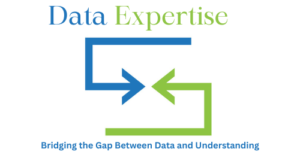In today’s digital world, data is the backbone of decision-making, problem-solving, and innovation. Whether you’re an aspiring data professional or someone looking to understand how data can impact your career or business, mastering Data Fundamentals is crucial for success. Data Fundamentals form the bedrock of everything in the data science, analytics, and cloud computing landscape. Without a solid grasp of these fundamentals, navigating through the ever-expanding world of data can be overwhelming and challenging.
This article delves into the essence of Data Fundamentals, exploring its key components, why it’s important, and how mastering these essentials can drive your success in the modern digital ecosystem.
What Are Data Fundamentals?
Data Fundamentals refer to the core principles, concepts, and techniques that serve as the foundation for understanding and working with data. Whether you’re collecting, analyzing, storing, or interpreting data, having a strong grasp of these fundamental concepts allows you to make informed decisions and solve problems efficiently.
Data Fundamentals cover a wide array of topics, including:
- Data Types: Understanding the different kinds of data (e.g., structured, unstructured, semi-structured) and their uses.
- Data Collection: Methods for gathering data accurately and ethically.
- Data Storage: The techniques and technologies used to store data, such as databases, data lakes, and cloud storage.
- Data Analysis: Techniques to process and extract meaningful insights from raw data.
- Data Visualization: Methods for presenting data in a way that is understandable and actionable for stakeholders.
- Data Security and Privacy: Protecting data and ensuring compliance with regulations like GDPR and HIPAA.
By mastering these components, you can build a strong data-driven mindset and enhance your ability to work with data effectively.
Why Are Data Fundamentals So Important?
Data is ubiquitous and has become a key driver of success for individuals, organizations, and industries worldwide. Whether you’re looking to launch a career in data science, business analytics, or cloud computing, or if you’re working in a role where data is a part of the decision-making process, the fundamentals provide the foundation on which more advanced techniques and technologies are built.
Here are a few reasons why mastering Data Fundamentals is essential:
1. Data-Driven Decision Making
Businesses across the globe rely on data to make informed decisions. From marketing strategies to financial projections, data plays a central role in helping organizations avoid guesswork and make evidence-based decisions. Understanding Data Fundamentals equips you with the skills to gather, analyze, and interpret data, enabling you to contribute valuable insights to your team or organization.
2. Building Advanced Skills
Mastering the basics of data is the first step towards mastering advanced data concepts. As you progress in your data career, you’ll encounter more complex tools, algorithms, and technologies. Having a strong foundation allows you to grasp these concepts more easily. Whether you’re working with machine learning algorithms, big data frameworks, or predictive analytics tools, knowing the core principles will make it easier to tackle these advanced challenges.
3. Improving Efficiency
With a solid understanding of data, you’ll be able to process and analyze large datasets efficiently. This can save time and resources, leading to quicker insights and more effective outcomes. Data Fundamentals help you avoid common mistakes, such as incorrect data handling, and enable you to make better decisions with less effort.
4. Career Advancement
As data continues to be a priority for businesses across all sectors, professionals with a strong understanding of Data Fundamentals are in high demand. Companies are looking for individuals who can not only collect and analyze data but can also communicate insights and contribute to the overall data strategy. By mastering the basics, you’re setting yourself up for career growth in the data field, whether in data analysis, data science, business intelligence, or data engineering.
Core Components of Data Fundamentals
The journey to mastering Data Fundamentals involves understanding several key concepts. Let’s dive into each of these essential components.
1. Data Types and Structures
Before you start working with data, it’s important to understand the different types of data you’ll encounter. There are three primary categories of data:
- Structured Data: This is highly organized data, typically stored in rows and columns in databases or spreadsheets. Examples include transaction records, customer information, and inventory data.
- Unstructured Data: This data lacks a predefined format, and includes things like text, images, videos, and social media posts. Unstructured data makes up a large portion of the data generated in the world.
- Semi-Structured Data: This is a hybrid of structured and unstructured data. It includes data that has some organization but doesn’t fit neatly into a traditional relational database. Examples include XML files and JSON data.
Knowing how to handle and process these types of data is a crucial first step toward mastering Data Fundamentals.
2. Data Collection Techniques
Collecting data accurately is the first step in the data pipeline. It’s essential to know how to gather data from various sources, ensuring its quality and relevance. Data collection can come from internal systems, external APIs, surveys, social media platforms, and even IoT devices. Some key methods for collecting data include:
- Surveys and Questionnaires: Gathering direct responses from individuals on various topics.
- Web Scraping: Collecting data from websites and online sources.
- APIs: Integrating third-party APIs to collect data from external services.
- Transactional Data: Data generated from business operations, such as sales transactions.
3. Data Storage Solutions
Once data is collected, it needs to be stored in a way that allows for easy access and efficient processing. There are several storage solutions available, including:
- Relational Databases: These are traditional storage systems, using tables and relationships between different data points. Popular examples include MySQL, PostgreSQL, and Oracle.
- NoSQL Databases: These are more flexible and scalable, ideal for handling unstructured or semi-structured data. Examples include MongoDB, Cassandra, and Couchbase.
- Cloud Storage: With the rise of cloud computing, cloud storage solutions such as Amazon S3, Google Cloud Storage, and Microsoft Azure offer scalable and accessible options for storing vast amounts of data.
4. Data Analysis and Interpretation
Data analysis is the process of turning raw data into valuable insights. It involves cleaning, processing, and applying statistical and computational techniques to identify trends, patterns, and relationships in the data. There are several popular techniques used in data analysis:
- Descriptive Analysis: This involves summarizing the data to understand what happened in the past. Examples include average sales figures, annual revenue, or customer satisfaction scores.
- Predictive Analysis: This method uses historical data to forecast future trends. Machine learning algorithms often drive this form of analysis.
- Prescriptive Analysis: This is used to suggest actions that can improve outcomes based on data insights.
5. Data Visualization
Data visualization is a powerful way to present complex data in a digestible and actionable format. Tools like Tableau, Power BI, and even Excel can help turn raw numbers into visually appealing charts, graphs, and dashboards. Effective data visualization makes it easier for stakeholders to understand trends, patterns, and insights, enabling better decision-making.
6. Data Security and Ethics
As data plays a more significant role in our lives, ensuring its security and privacy has become paramount. Mastering Data Fundamentals involves understanding data protection measures, including encryption, secure storage, and compliance with data protection laws such as GDPR (General Data Protection Regulation) and HIPAA (Health Insurance Portability and Accountability Act).
7. Data Governance
Data governance refers to the processes and policies in place to ensure data accuracy, consistency, privacy, and accessibility across an organization. It includes creating standards for data collection, storage, and usage to maintain high-quality data that can be trusted for decision-making.
How to Master Data Fundamentals
Mastering Data Fundamentals is an ongoing process, but the following steps can help you build a strong foundation:
- Start with the Basics: Familiarize yourself with data types, structures, and collection methods. Books, online courses, and tutorials are great ways to get started.
- Practice with Real Data: Experiment with publicly available datasets to practice data collection, analysis, and visualization.
- Learn Data Tools: Get comfortable with popular tools like Excel, SQL, and cloud platforms like AWS or Azure to store, process, and analyze data.
- Stay Updated: Data is a rapidly evolving field. Keep learning about new tools, techniques, and regulations that impact the data world.
Conclusion
Mastering Data Fundamentals is the first step in becoming proficient in the ever-growing and evolving data field. Whether you’re just starting out in data or you’re a seasoned professional, these fundamentals will serve as the cornerstone of your success. By understanding key concepts like data types, collection methods, analysis techniques, and security considerations, you can unlock the power of data and contribute to data-driven decision-making in any organization.
As the data landscape continues to expand, having a solid foundation will not only make you more effective in your role but also position you for long-term success in an increasingly data-centric world.




